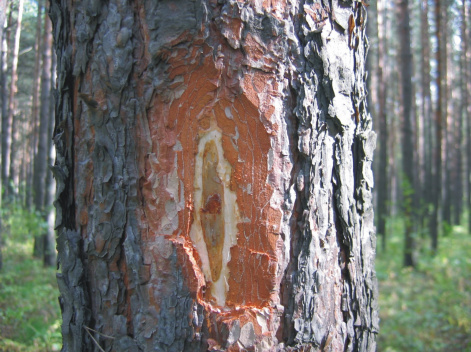Krasnoyarsk scientists proposed to estimate the air quality using pine trees
18 May 2020 г.

For many large industrial centers, air pollution is one of the main problems of the quality of the environment. For example, in a large Siberian city, which is Krasnoyarsk, high concentrations of benzapyrene and fluorine compounds are observed in the air, many times exceeding the allowed level. Krasnoyarsk often takes a leading position as to adverse environmental conditions in the ranking of the World Air Quality Index. Excessive emissions pollute urban and suburban ecosystems with toxic compounds. At the same time, the consequent danger of such emissions for living organisms and ecosystems often remains unknown.
Scientists of the Federal Research Center “Krasnoyarsk Science Center SB RAS”, Siberian Federal University and the Siberian Institute of Business, Management and Psychology found out that air pollution with industrial emissions leads to a weakening of the pine forests of the Krasnoyarsk agglomeration, active loss of needles by trees, and a significant reduction in the number of trees, namely to thinning. The results are based on eighteen-year observations, from 2002 to 2019, of the state of two pine forest areas in the vicinity of Krasnoyarsk, each including about 500 trees. One of them is located on a wind rose from industrial enterprises, while the other one - on the opposite side of the city.
To uncover the causes of this weakening of pine trees under the influence of polluted air, the scientists developed and applied the method of necrosis marker. The method consists in injecting into a tree stem a special preparation containing specific substances - elicitors derived from the pathogenic fungus Ceratocystis laricicola. Using this method, the researchers annually tested the condition of 50 trees. After the injection, the tree recognizes the elicitors of the pathogenic fungus and initiates a protective response which allows the plant to quickly isolate damaged cells. As a result, necrosis is formed on the stem - the formation of dead outer tissue surrounded by a scar. The scientists found out that the height of the necrosis on the stem depends on the air quality and condition of the needles. In healthy trees, necrosis is shifted down from the injection site, while in weakened trees it rises up towards the crown.
“To explain the change in the location of necrosis on the stem relative to the injection site, we proposed a hypothesis which associates the carbohydrate metabolism and movement of fungal elicitors in the plant. In the absence of factors damaging needles, the excess glucose generated in the needles during photosynthesis, also moves to the roots, where it is stored in the form of starch. The movement of sugars, as well as fungal elicitors, down the stem is recorded with the help of necrosis, which moves down from the injection site. When the needles are damaged for some reason (due to toxins or fire), a necrotic spot on the stem moves up towards the crown. The movement of sugars up the stem is ensured by the consumption of starch stocks, meaning the tree is "losing weight". Depletion is accompanied by an increase in the proportion of dying trees in the pine forest, ” says Galina Polyakova, Doctor of Biological Sciences, senior researcher at the V.N. Sukacheva Institute of Forest SB RAS.
The developed method will help researchers to assess the effect of pollution on forests, chronology of toxicity of industrial emissions, as well as to determine the recovery period for tree crowns after various negative impacts.
The study was supported by the Russian Foundation for Basic Research and Krasnoyarsk Science Foundation.
Share:
